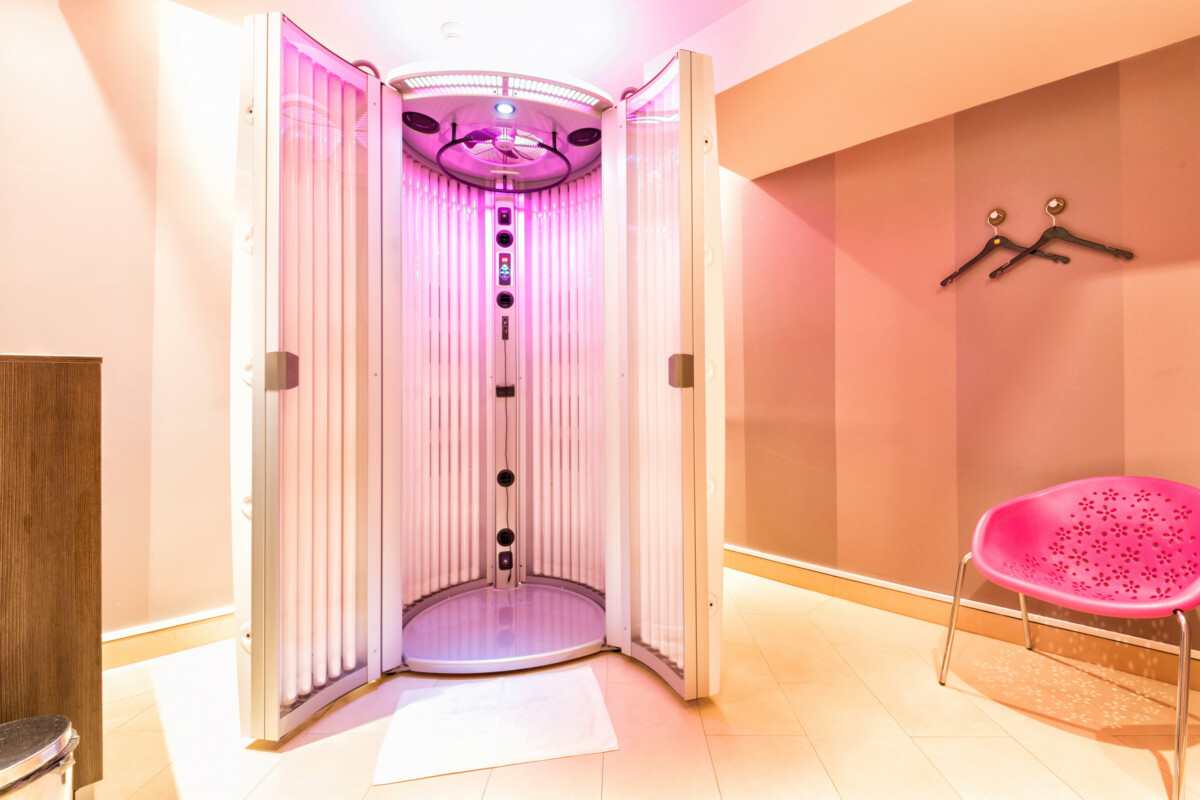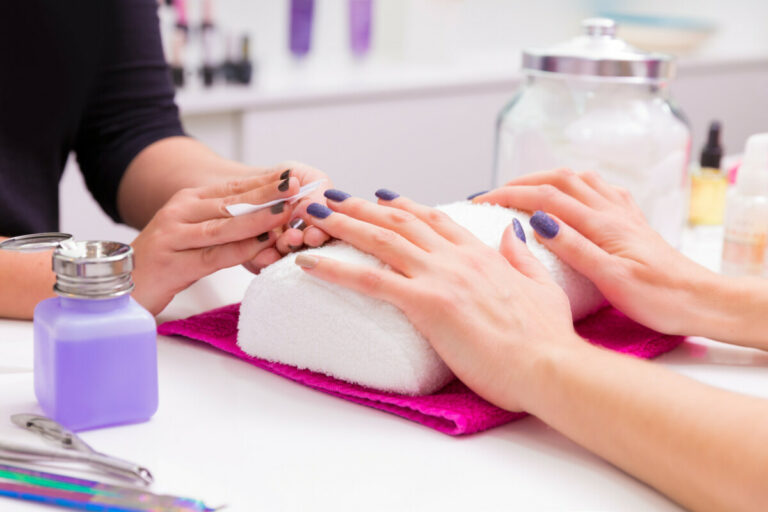How to Write Tanning Salon Business Plan (21 Key Steps)

If you’re looking to start a tanning salon business, one of the most important steps is creating a business plan. A well-crafted business plan can help you secure funding, attract customers, and guide your decision-making as you grow your business. In this article, I’ll walk you through the key components of a tanning salon business plan and provide tips for making your plan as effective as possible.
1. Executive Summary

Overview of The Tanning Salon Business
Starting a tanning salon business requires a comprehensive understanding of the industry and the target market. The tanning salon industry has been growing steadily over the past few years, with an increasing number of people looking for a healthy and attractive tan. The industry has a diverse customer base, including young adults, fitness enthusiasts, and people who want to look good for special occasions.
Objectives and Goals
When discussing the objectives and goals for a tanning salon business plan:
- Start by emphasizing the primary objective: to carve out a profitable and sustainable niche that aligns with customer needs.
- Highlight the salon’s commitment to offering top-tier tanning services that strike a balance between affordability and accessibility.
- Stress the importance of creating an inviting ambiance, conducive to relaxation and a haven from daily stresses.
- Discuss the overarching goals, such as the drive to enhance revenue, the desire to grow the clientele, and the commitment to maintaining stellar customer satisfaction.
- Don’t forget to touch on the salon’s aspiration to stand out from competitors by forging a unique brand identity.
Brief Description
When outlining a brief description of the tanning salon:
- Open with a mention of the business plan’s intent to capture all the pivotal facets of the venture.
- Detail the range of tanning services on offer, which might include spray tanning, UV tanning, and related merchandise.
- Define the target audience: it could be young adults, fitness buffs, or those prepping for special events.
- Dive into the marketing strategies, underscoring the role of digital avenues like social media, community-centric advertising, and the potential of referral programs.
- Outline the proposed management structure: this might encompass roles like a general manager, a marketing lead, and a dedicated team of tanning experts.
- Conclude by shedding light on the financial projections. Mention the startup capital, anticipated for foundational costs such as equipment, premises, and advertising. Drive home the point that the enterprise hopes to break even in its first year and project its profit ambitions for subsequent years.
2. Services Offered

When creating a tanning salon business plan, it’s crucial to outline the services you’ll be offering to your customers. Here are the main services you can provide:
Tanning Bed Sessions
Tanning bed sessions are a popular service that many customers seek out when visiting a tanning salon. You can offer various types of tanning beds, such as stand-up or lay-down options, as well as different levels of intensity to cater to different skin types and preferences. It’s important to educate your customers on the risks of overexposure to UV rays and provide them with protective eyewear and lotions to ensure their safety.
Spray Tans
Spray tans are another popular service that can provide customers with a sun-kissed glow without the harmful effects of UV rays. You can offer different types of spray tans, such as airbrush or booth options, and provide customers with a choice of shades to match their skin tone. It’s important to have well-trained staff who can apply the spray tan evenly and provide customers with aftercare instructions to ensure their tan lasts as long as possible.
Additional Services
In addition to tanning bed sessions and spray tans, you can offer a variety of additional services to enhance your customers’ experience. This can include services such as:
- Teeth Whitening
- Red Light Therapy
- Infrared Sauna Sessions
- Skin Care Products
By offering additional services, you can increase your revenue and provide customers with a more comprehensive experience. It’s important to research and invest in high-quality equipment and products to ensure customer satisfaction.
Overall, offering a variety of services can help attract and retain customers, but it’s important to prioritize their safety and satisfaction. By providing a welcoming and knowledgeable environment, you can create a successful tanning salon business.
3. Products Offered

When it comes to offering products in your tanning salon, you want to ensure that you are providing your customers with the best possible options. Here are the three main product categories that you should consider offering:
Tanning Lotions
Tanning lotions are a must-have product for any tanning salon. These lotions help to enhance the tanning process and provide a deeper, longer-lasting tan. There are many different types of tanning lotions available, so it’s important to offer a variety of options to suit different skin types and preferences.
Consider offering lotions with different levels of SPF, as well as options that are designed for sensitive skin or those that are fragrance-free. You may also want to offer sample sizes or travel-sized options so that customers can try out different products before committing to a full-sized bottle.
Skin Care Products
Tanning can be harsh on the skin, so it’s important to offer skin care products that can help to soothe and moisturize. Consider offering products such as after-tan lotions, moisturizers, and exfoliating scrubs.
Again, it’s important to offer a variety of options to suit different skin types and preferences. Look for products that are specifically designed for use after tanning, as these will typically be more effective at soothing and moisturizing the skin.
UV Protection Items
UV protection is important for everyone, whether they are tanning or not. Offering UV protection items such as sunglasses and sunscreen can help to keep your customers safe and comfortable while they are in your salon.
Consider offering a range of sunscreen options with different levels of SPF, as well as options that are water-resistant or designed for sensitive skin. You may also want to offer sunglasses with different styles and colors to suit different preferences.
Overall, offering a range of high-quality products in your tanning salon can help to enhance the customer experience and keep your customers coming back for more.
4. Market Analysis

Overview of The Tanning Industry
Before starting a tanning salon business, it is essential to understand the current state of the tanning industry. The tanning industry has been growing steadily over the past few years, with a market size of $3.6 billion in 2021. The industry is expected to continue growing at a CAGR of 4.5% from 2021 to 2028. The increasing demand for a tanned look, especially among the younger population, has been the primary driver of this growth.
Target Demographic and Their Needs
Your target demographic for a tanning salon business would be individuals aged 18-35 who are interested in maintaining a tanned look. They may be students, young professionals, or fitness enthusiasts who want to look good and feel confident. Your potential customers may have different needs, such as a quick tanning session during their lunch break or a more extended session before a special occasion.
Market Trends
The tanning industry has seen some significant trends in recent years. One of the most prominent trends is the shift towards organic and natural tanning products. Customers are becoming more aware of the harmful effects of UV rays and are looking for safer alternatives. Another trend is the rise of spray tanning, which is a more convenient and faster alternative to traditional tanning methods.
Competitive Analysis
Before starting a tanning salon business, it’s crucial to analyze your competition. You can do this by researching other tanning salons in your area and identifying their strengths and weaknesses. You can also look at their pricing strategy, customer reviews, and marketing tactics. By understanding your competition, you can develop a unique selling proposition that sets your business apart and attracts more customers.
In summary, the tanning industry is growing, and there is a demand for tanning services among the younger population. Your target demographic has different needs, and there are market trends that you can capitalize on. By conducting a competitive analysis, you can develop a business plan that meets the needs of your customers and helps your business stand out in a crowded market.
5. Marketing and Sales Strategy

Pricing Strategy
Your pricing strategy for your tanning salon business plan should be based on the target market you are serving. Determine your target audience and research their purchasing power, budget, and willingness to pay for your services. Set prices that are competitive and profitable for your business.
Consider offering package deals or discounts to attract and retain customers. You could offer a discount for customers who purchase a certain number of tanning sessions or a monthly membership. This can encourage repeat business and increase your customer base.
Promotional Activities
Promotional activities can help you attract new customers and retain existing ones. Consider offering a referral program where current customers receive a discount or free session for referring new customers to your salon.
You could also offer a loyalty program where customers earn points for each session they purchase, which can be redeemed for free sessions or other rewards. Additionally, consider offering special promotions during slow periods or holidays to encourage customers to visit.
Advertising Channels
To reach your target audience, consider advertising through various channels such as social media, local newspapers, and flyers. Social media platforms like Facebook and Instagram can be effective in reaching a younger demographic.
You could also consider partnering with local businesses or organizations to promote your salon. Offer to provide free tanning sessions or discounts to employees or members of the organization in exchange for promoting your business.
Sales Tactics and Processes
Train your staff on effective sales tactics to increase revenue and customer satisfaction. Encourage them to upsell customers on additional services or products such as lotions or accessories.
Ensure that your sales processes are clear and efficient. Make it easy for customers to book appointments and purchase sessions online or through a mobile app. Consider offering automatic billing for monthly memberships to simplify the payment process for customers.
6. Management and Organization

Organizational Structure
Your tanning salon business plan should outline your organizational structure. This structure should be designed to ensure that your business is efficient and effective in meeting its objectives. The organizational structure will determine how your business is managed and how decisions are made.
There are several different organizational structures that you can choose from, including functional, divisional, matrix, and flat. Each structure has its own advantages and disadvantages, and you should choose the one that best suits your business.
Roles and Responsibilities
In this section, you should outline the roles and responsibilities of each member of your team. You should include information on their job titles, duties, and responsibilities. This will help to ensure that everyone knows what is expected of them and that there is no confusion about who is responsible for what.
Key Personnel and Their Backgrounds
Your tanning salon business plan should also include information about your key personnel and their backgrounds. This will help to demonstrate that you have a team with the necessary skills and experience to make your business a success.
You should provide information on each person’s education, work experience, and any relevant certifications or licenses. This will help to demonstrate that your team has the necessary expertise to run a successful tanning salon.
| Name | Job Title | Education | Work Experience |
|---|---|---|---|
| John Smith | CEO | MBA | 10 years in the tanning industry |
| Jane Doe | COO | Bachelor’s in Business | 8 years in management |
| Sarah Johnson | CFO | CPA | 5 years in finance |
| Mike Brown | Marketing Manager | Bachelor’s in Marketing | 5 years in marketing |
In conclusion, your tanning salon business plan should include a clear and concise description of your organizational structure, roles and responsibilities, and key personnel and their backgrounds. This will help to ensure that your business is well-organized and that you have the necessary expertise to make it a success.
7. Supplier Management

Managing your suppliers is a crucial part of running a successful tanning salon business. In this section, we will discuss the key aspects of supplier management that you need to consider when creating your business plan.
Key Suppliers for Products and Equipment
When it comes to running a tanning salon, your key suppliers will be those who provide you with the products and equipment you need to operate your business. This includes tanning beds, lotions, and other supplies.
To ensure that you have a reliable supply of these products and equipment, it is important to establish good relationships with your suppliers. This means communicating regularly with them, keeping them informed of your needs, and paying your bills on time.
Terms and Agreements
When you work with suppliers, it is important to have clear terms and agreements in place. This includes things like payment terms, delivery schedules, and return policies.
Be sure to review these terms carefully before signing any agreements with your suppliers. Make sure that you understand what is expected of you and what you can expect from your suppliers.
Supplier Selection Criteria
When selecting suppliers, there are several criteria that you should consider. These include:
- Quality: You want to work with suppliers who provide high-quality products and equipment.
- Price: You need to balance quality with price to ensure that you are getting the best value for your money.
- Reliability: You need to be able to rely on your suppliers to provide you with the products and equipment you need, when you need them.
- Customer service: You want to work with suppliers who are responsive and easy to work with.
Consider these criteria carefully when selecting your suppliers. Look for suppliers who meet your needs and who you feel comfortable working with.
By effectively managing your suppliers, you can ensure that you have the products and equipment you need to run your tanning salon business successfully.
8. Safety and Hygiene

Safety Procedures for Tanning Equipment
Ensuring the safety of your customers is a top priority when operating a tanning salon. It is important to have proper safety procedures in place for all tanning equipment. Here are some guidelines to follow:
- Regularly inspect all tanning equipment to ensure it is in good working condition.
- Keep emergency stop buttons easily accessible and clearly labeled.
- Provide clear instructions on how to use the equipment properly.
- Post warning signs in the tanning area to remind customers of the risks of overexposure.
- Limit the amount of time customers can spend in the tanning bed to reduce the risk of burns and other skin damage.
Hygiene Practices
Maintaining a clean and hygienic environment is crucial for the health and safety of your customers. Here are some practices to follow:
- Regularly clean and disinfect all tanning beds and equipment.
- Provide clean towels and disinfectant spray for customers to use before and after using the equipment.
- Keep the tanning area well-ventilated to prevent the spread of germs.
- Train employees on proper hygiene practices and provide them with the necessary cleaning supplies.
Customer Safety Information and Education
Educating your customers on tanning safety is an important part of running a tanning salon. Here are some tips to consider:
- Provide customers with information on the risks of overexposure to UV rays and the importance of using protective eyewear.
- Display warning signs in the tanning area to remind customers of the risks of overexposure.
- Offer educational materials, such as brochures or videos, to help customers understand the risks and benefits of tanning.
- Encourage customers to ask questions and seek advice from a trained professional.
By following these safety and hygiene practices, you can help ensure the health and safety of your customers while operating a successful tanning salon.
9. Accreditations and Certifications

When creating a tanning salon business plan, it is important to consider the accreditations and certifications that your business will need to obtain. These certifications and accreditations not only ensure that your business is operating legally, but they also provide a level of trust and confidence to your customers.
Relevant Industry Certifications
One of the most important certifications for a tanning salon is the Indoor Tanning Association (ITA) certification. The ITA provides a certification program that ensures your salon is following proper safety guidelines and regulations. Additionally, the ITA provides ongoing education and support to help your business stay up-to-date with the latest industry trends and regulations.
Other relevant certifications may include those related to sanitation and hygiene, such as the National Sanitation Foundation (NSF) or the Occupational Safety and Health Administration (OSHA) certifications.
Employee Training Programs
It is important to ensure that your employees receive proper training to provide high-quality service to your customers. This includes training on how to properly operate tanning equipment, as well as customer service and sales training.
Some of the most popular employee training programs include Smart Tan, the National Tanning Training Institute (NTTI), and the Sun is Life® Training Program. These programs provide comprehensive training on tanning safety, skin typing, and customer service.
Quality Assurances
In addition to certifications and employee training, it is important to implement quality assurance measures to ensure that your salon is providing the highest level of service to your customers. This includes regular equipment maintenance and cleaning, as well as customer feedback and satisfaction surveys.
Implementing a quality assurance program can help your salon stand out from competitors and build a loyal customer base.
Overall, obtaining relevant certifications and implementing employee training and quality assurance programs can help your tanning salon succeed in a competitive industry.
10. Financial Plan

Startup Costs
Starting a tanning salon can be quite expensive, so it’s important to plan your startup costs carefully. Here are some of the costs you should consider when creating your tanning salon business plan:
- Rent and utilities
- Tanning beds and equipment
- Decor and furnishings
- Insurance
- Legal and accounting fees
- Marketing expenses
- Initial inventory of lotions and other products
It’s important to research and estimate these costs accurately to ensure that you have enough capital to get your business off the ground.
Operational Expenses
Once your tanning salon is up and running, you’ll need to consider the ongoing operational expenses. These can include:
- Rent and utilities
- Employee wages
- Maintenance and repairs for equipment
- Inventory of lotions and other products
- Marketing expenses
Make sure to factor in these expenses when creating your financial plan, and consider ways to keep costs low without sacrificing quality.
Revenue Projections
To create revenue projections for your tanning salon business plan, you’ll need to consider a few factors:
- The number of tanning beds you have
- The prices you charge for tanning sessions and products
- The hours of operation
- The local market demand for tanning services
Use these factors to estimate your monthly and yearly revenue, and adjust your pricing and marketing strategies accordingly.
Break-Even Analysis
A break-even analysis can help you determine how much revenue you need to generate in order to cover your expenses and start making a profit. To perform a break-even analysis for your tanning salon, you’ll need to calculate your fixed and variable costs, and then estimate your monthly revenue. Based on these figures, you can determine how many tanning sessions you need to sell each month in order to break even.
11. Funding Request

Total Amount Required
To successfully launch your tanning salon business, you will require a total funding amount of $250,000. This amount will cover the cost of equipment, location rental, marketing, and salaries for your employees.
Purpose of The Funding
The funding will be used to purchase the necessary equipment and supplies to operate the tanning salon, including tanning beds, spray tan machines, and skincare products. It will also cover the cost of renting a prime location for the salon, marketing efforts to attract new customers, and salaries for your employees.
Proposed Terms and Repayment Plan
For example, the proposed terms for the funding could be as follows:
- Loan amount: $250,000
- Interest rate: 6%
- Repayment term: 5 years
- Monthly payment: $4,787.16
The repayment plan will begin six months after the loan is disbursed, to allow for time to establish the business and generate revenue. The loan will be repaid in monthly installments over a period of five years.
To secure the funding, you will provide collateral in the form of the equipment and assets purchased with the loan. You will also provide regular financial statements and updates on the progress of the business to ensure transparency and accountability.
12. SWOT Analysis

Strengths
When conducting a SWOT analysis for your tanning salon business plan, it is important to identify your strengths. Your strengths are the internal factors that give you an advantage over your competitors. Some strengths of a tanning salon business might include:
- Experienced and knowledgeable staff
- High-quality tanning equipment
- Convenient location
- Wide range of tanning services
- Competitive pricing
Weaknesses
Identifying your weaknesses is just as important as identifying your strengths. Your weaknesses are the internal factors that put you at a disadvantage compared to your competitors. Some weaknesses of a tanning salon business might include:
- Limited marketing budget
- Lack of brand recognition
- Dependence on seasonal business
- Limited hours of operation
- Limited customer base
Opportunities
Opportunities are external factors that can positively impact your tanning salon business. Identifying opportunities can help you take advantage of market trends and stay ahead of your competitors. Some opportunities for a tanning salon business might include:
- Growing demand for tanning services
- Introduction of new tanning technologies
- Expansion into new markets
- Partnership with complementary businesses
- Increased awareness of the health benefits of tanning
Threats
Threats are external factors that can negatively impact your tanning salon business. Identifying threats can help you prepare for potential challenges and mitigate risk. Some threats to a tanning salon business might include:
- Increased competition from other tanning salons
- Economic downturns
- Changes in consumer preferences
- Regulatory changes
- Negative publicity or reviews
Overall, conducting a thorough SWOT analysis can help you identify areas of your tanning salon business that need improvement and areas where you can capitalize on opportunities.
13. Legal Structure and Compliance

When starting a tanning salon business, it is important to consider the legal structure of your business and ensure that you comply with all relevant regulations and licensing requirements. This section will provide an overview of the legal considerations that you should take into account when creating your tanning salon business plan.
Always consult a legal professional.
Business Entity Type
One of the first decisions you will need to make when starting a tanning salon business is the type of legal entity you will establish. There are several options to choose from, including sole proprietorship, partnership, limited liability company (LLC), and corporation. Each entity type has its own advantages and disadvantages, and it is important to choose the one that best suits your needs.
Relevant Regulations for Tanning Salons
Tanning salons are subject to a variety of regulations at the federal, state, and local levels. Some of the most important regulations to be aware of include:
- FDA regulations for tanning equipment
- OSHA regulations for workplace safety
- State and local regulations for sanitation and hygiene
- Zoning regulations for commercial properties
It is important to research and understand all relevant regulations to ensure that your tanning salon is in compliance and avoid any potential legal issues.
Licensing Requirements
In addition to complying with regulations, tanning salons must also obtain the necessary licenses and permits to operate legally. Licensing requirements vary by state and locality, but may include:
- Business licenses
- Health permits
- Building permits
- Fire safety permits
- Sales tax permits
Be sure to research and obtain all necessary licenses and permits before opening your tanning salon to avoid any potential legal issues.
In summary, when creating a tanning salon business plan, it is important to consider the legal structure of your business, comply with all relevant regulations, and obtain the necessary licenses and permits. By doing so, you can ensure that your tanning salon operates legally and avoid any potential legal issues.
14. Customer Engagement and Retention

As a tanning salon owner, one of your top priorities should be to keep your customers coming back. Customer engagement and retention are crucial for the success of your business. Here are a few strategies you can use to keep your customers loyal and engaged.
Customer Loyalty Programs
One of the most effective ways to retain customers is by offering loyalty programs. These programs reward customers for their repeat business and encourage them to continue using your services. A loyalty program can take many forms, such as a points system, discounts, or free services.
Consider offering a loyalty program that rewards customers for every dollar spent or every visit to your salon. You can also offer incentives for referrals, such as a free tanning session for every new customer referred.
Feedback Mechanisms
Another way to keep your customers engaged is by soliciting feedback from them. This can help you identify areas where you can improve your services and show your customers that you value their opinions.
Consider implementing a feedback mechanism, such as a suggestion box or an online survey. Encourage your customers to provide feedback by offering incentives, such as discounts or free services.
Special Offers and Incentives
Finally, offering special promotions and incentives can help keep your customers engaged and loyal. Consider offering discounts for first-time customers or for customers who refer new business to your salon.
You can also offer seasonal promotions, such as discounts on tanning packages during the summer months. Make sure to promote your specials and incentives through social media, email marketing, and other channels to maximize their impact.
By implementing these strategies, you can keep your customers engaged and loyal, and ensure the long-term success of your tanning salon business.
15. Sustainability and Social Responsibility

As a tanning salon owner, it is important to consider sustainability and social responsibility when creating your business plan. By implementing eco-friendly and socially responsible initiatives, you can not only reduce your environmental impact but also attract customers who value these principles.
Eco-Friendly Initiatives
To reduce your salon’s environmental footprint, consider implementing the following eco-friendly initiatives:
- Energy-efficient lighting and equipment: Switching to energy-efficient lighting and equipment can significantly reduce your salon’s energy consumption and costs.
- Recycling program: Implement a recycling program to minimize waste and promote sustainable practices.
- Use of eco-friendly products: Choose eco-friendly products such as organic tanning solutions and biodegradable towels to reduce the amount of harmful chemicals in the environment.
Social Initiatives and Community Involvement
As a responsible business owner, it is important to give back to your community and support social initiatives. Consider the following ways to get involved:
- Local charity partnerships: Partner with local charities and donate a portion of your profits to support their causes.
- Community events: Participate in community events such as charity walks or local festivals to increase your salon’s visibility and support community initiatives.
- Employee volunteer programs: Encourage your employees to volunteer their time and skills to support local causes.
Ethical Considerations
In addition to eco-friendly and socially responsible initiatives, it is important to consider ethical considerations in your business practices. Consider the following ethical principles:
- Fair labor practices: Ensure that your employees are treated fairly and paid a living wage.
- Non-discrimination: Do not discriminate against employees or customers based on race, gender, age, or other factors.
- Transparency: Be transparent in your business practices and communicate openly with your employees and customers.
By implementing these sustainability and social responsibility initiatives, you can create a successful tanning salon business that not only benefits your customers but also supports the environment and your community.
16. Growth Strategy

As your tanning salon business grows, you’ll need to develop a growth strategy that will help you expand your business and increase your revenue. Here are some key areas to focus on:
Plans for Expansion
One of the key ways to grow your tanning salon business is to expand your operations. This could mean opening new locations, or it could mean adding new services or products to your existing business.
Before you start expanding, it’s important to do your research and make sure that there’s a demand for your services in the new location or for the new product. You should also make sure that you have the financial resources to support the expansion.
New Service or Product Offerings
Another way to grow your tanning salon business is to introduce new services or products. This could mean adding a new type of tanning bed, offering spray tanning, or selling tanning lotions and other products.
When introducing new services or products, it’s important to do your research and make sure that there’s a demand for them. You should also make sure that you have the resources to support the new offerings, including the staff and equipment needed to provide the service or product.
Partnership Opportunities
Partnering with other businesses can also be a great way to grow your tanning salon business. For example, you could partner with a gym or fitness center to offer tanning services to their members, or you could partner with a beauty salon to offer tanning services as part of a package.
When looking for partnership opportunities, it’s important to find businesses that complement your own and that have a similar target market. You should also make sure that the partnership is mutually beneficial and that both businesses stand to gain from the partnership.
17. Risk Management

As with any business, there are risks associated with owning and operating a tanning salon. It’s important to identify potential risks and develop strategies to mitigate them. Additionally, it’s crucial to consider insurance options to protect your business in case of unforeseen events.
Identification of Potential Risks
Some potential risks associated with owning and operating a tanning salon include:
- Health risks associated with tanning, such as skin damage and increased risk of skin cancer
- Equipment malfunction or failure
- Fire or water damage to the salon
- Theft or vandalism
- Legal liabilities, such as lawsuits from customers or employees
Strategies to Mitigate These Risks
To mitigate these risks, consider implementing the following strategies:
- Provide customers with information about the potential health risks associated with tanning and encourage them to take necessary precautions, such as using sunscreen and limiting their exposure to UV rays.
- Regularly inspect and maintain tanning equipment to prevent malfunctions or failures.
- Install smoke detectors, fire extinguishers, and sprinkler systems to protect against fire damage.
- Implement security measures, such as surveillance cameras and alarm systems, to deter theft and vandalism.
- Consult with a legal professional to ensure that your business is in compliance with all applicable laws and regulations.
Insurance Considerations
In addition to implementing strategies to mitigate risks, it’s important to consider insurance options to protect your business. Some insurance options to consider include:
- General liability insurance to protect against legal liabilities and lawsuits
- Property insurance to protect against fire, water, and other types of damage to your salon and its contents
- Business interruption insurance to cover lost income if your salon is forced to close temporarily due to unforeseen events
Consult with an insurance professional to determine the best insurance options for your tanning salon.
18. Feedback and Continuous Improvement

Feedback Collection Methods
Collecting feedback from your customers is a crucial part of improving your tanning salon business. There are several methods you can use to collect feedback, including:
- Customer surveys: Conduct surveys to gather feedback from your customers. You can use online survey tools or paper surveys.
- Social media: Monitor your social media accounts for comments and feedback from your customers.
- In-person feedback: Encourage your customers to provide feedback in person, either through suggestion boxes or by talking to your staff.
Analysis and Action on Feedback
Once you have collected feedback, it’s important to analyze it and take action where necessary. Here are some steps you can take:
- Categorize feedback: Categorize feedback into different areas, such as customer service, cleanliness, or pricing.
- Identify patterns: Look for patterns in the feedback to identify common issues or areas for improvement.
- Take action: Take action on the feedback by addressing the issues raised and making improvements where necessary.
Continuous Improvement Initiatives
Continuous improvement is an ongoing process that involves making incremental improvements to your business over time. Here are some initiatives you can take to continuously improve your tanning salon business:
- Staff training: Provide ongoing training to your staff to ensure they are up-to-date with industry best practices and can provide excellent customer service.
- Equipment upgrades: Regularly upgrade your tanning equipment to ensure it is up-to-date and functioning properly.
- Customer loyalty programs: Implement customer loyalty programs to reward your regular customers and encourage repeat business.
By collecting feedback, analyzing it, and continuously improving your business, you can ensure that your tanning salon is providing the best possible service to your customers.
19. Contingency Plan

As with any business, it’s important to have a contingency plan in place to prepare for unexpected events. This section will outline the key elements of your tanning salon’s contingency plan.
Plan for Unexpected Events
Your contingency plan should identify potential risks and outline steps to mitigate them. This could include natural disasters, equipment failures, or unexpected closures due to health concerns.
To prepare for these events, consider the following:
- Develop an emergency response plan with clear procedures for staff and customers
- Have backup equipment available in case of failures
- Maintain adequate insurance coverage to protect against property damage or liability claims
- Have a plan for communicating with customers in the event of unexpected closures
Backup Suppliers and Service Providers
In the event of supply chain disruptions or service provider failures, it’s important to have backup options in place. This could include backup suppliers for tanning products, as well as backup service providers for equipment maintenance and repairs.
To ensure you’re prepared, consider the following:
- Identify backup suppliers for key products and negotiate pricing and terms in advance
- Maintain relationships with multiple service providers to ensure timely repairs and maintenance
- Regularly review and update your backup supplier and service provider lists to ensure they remain current
20. Financial Reserve Strategy

Finally, a contingency plan should include a financial reserve strategy to help your business weather unexpected events. This could include setting aside funds to cover expenses during unexpected closures, or maintaining a line of credit to cover short-term cash flow needs.
To develop a financial reserve strategy, consider the following:
- Estimate the potential costs of unexpected events and identify the amount of funds needed to cover them
- Develop a plan for building up your financial reserves over time
- Regularly review and update your financial reserve strategy to ensure it remains adequate
By developing a comprehensive contingency plan, you can help ensure your tanning salon is prepared for unexpected events and can continue to thrive over the long term.
21. Exit Strategy

When writing a tanning salon business plan, it’s crucial to consider your exit strategy. An exit strategy is a plan for how you will exit your business when the time comes. Here are three common exit strategies to consider:
Sale of The Business
One option for exiting your tanning salon business is to sell it. This can be a profitable option if your business is successful and has a strong customer base. When selling your business, it’s important to have a clear understanding of its value and to find a buyer who is willing to pay that amount. You may want to work with a business broker to help you find potential buyers and negotiate the sale.
Succession Planning
Another option for exiting your tanning salon business is to pass it on to a family member or employee. This is known as succession planning. It’s important to have a clear plan in place for how the business will be transferred and for the new owner to have the necessary skills and experience to run the business successfully.
Dissolution Process
If neither selling nor succession planning is an option, you may need to dissolve your business. This involves selling off assets and paying off debts. It’s important to have a clear plan in place for how this will be done and to follow all legal requirements for dissolving a business.
No matter which exit strategy you choose, it’s important to plan ahead and make sure you have a clear understanding of the process. This will help ensure a smooth transition and a successful exit from your tanning salon business.
22. Appendices

Detailed Financial Statements
In this section, you should include detailed financial statements for your tanning salon business plan. These statements should include a balance sheet, income statement, and cash flow statement. You should also include a break-even analysis, which will help you determine the minimum amount of revenue you need to generate to cover your expenses.
Market Research Data
Your tanning salon business plan should include market research data that you have collected to support your business idea. This data should include information about your target market, including demographic and psychographic information. You should also include information about your competitors, such as their strengths and weaknesses, pricing strategies, and marketing tactics.
Resumes of Key Personnel
If you have key personnel who will be involved in running your tanning salon, you should include their resumes in this section. These resumes should highlight their relevant experience and qualifications, and should demonstrate why they are the best fit for their respective roles.
Any Other Relevant Documents
In addition to the above documents, you may also want to include any other relevant documents that support your tanning salon business plan. This could include contracts, permits, licenses, or any other legal documents that are necessary to operate your business.
Remember, your appendices should be well-organized and easy to read. Use tables, bullet points, bold text, and other formatting techniques as necessary to make the information clear and accessible to your readers. By including these documents in your appendices, you will provide your readers with the information they need to make an informed decision about your tanning salon business idea.
Frequently Asked Questions

What are the key components of a successful tanning salon business plan?
A successful tanning salon business plan should include an executive summary, market analysis, business description, management and organizational structure, marketing and sales strategies, financial projections, and funding requirements. Additionally, it should clearly outline your target audience, unique selling proposition, and competitive advantages.
How can you accurately forecast revenue and expenses for your tanning salon?
To accurately forecast revenue and expenses for your tanning salon, you should conduct thorough market research and analyze industry trends. Additionally, you should develop a detailed financial plan that includes projected revenue, expenses, and profit margins. It’s important to regularly review and adjust your financial plan based on actual performance to ensure accuracy.
What are the most effective marketing strategies for a tanning salon?
The most effective marketing strategies for a tanning salon include social media advertising, email marketing, referral programs, and promotional events. It’s important to target your marketing efforts towards your ideal customer and to regularly analyze the success of your campaigns to make adjustments and improvements.
What regulations and permits are necessary to open a tanning salon?
The regulations and permits necessary to open a tanning salon vary by state and local jurisdiction. Generally, you will need to obtain a business license, register for taxes, and comply with health and safety regulations. Additionally, you may need to obtain a permit to operate a tanning bed or booth.
What are the best practices for managing and training tanning salon staff?
The best practices for managing and training tanning salon staff include providing ongoing training and development opportunities, establishing clear expectations and performance metrics, and creating a positive and supportive work environment. Additionally, it’s important to regularly communicate with staff and provide opportunities for feedback and input.
How can you differentiate your tanning salon from competitors in the market?
To differentiate your tanning salon from competitors in the market, you should focus on providing exceptional customer service, offering a unique and personalized experience, and staying up-to-date with industry trends and innovations. Additionally, you can differentiate your salon by offering additional services such as spray tanning or skincare treatments.





